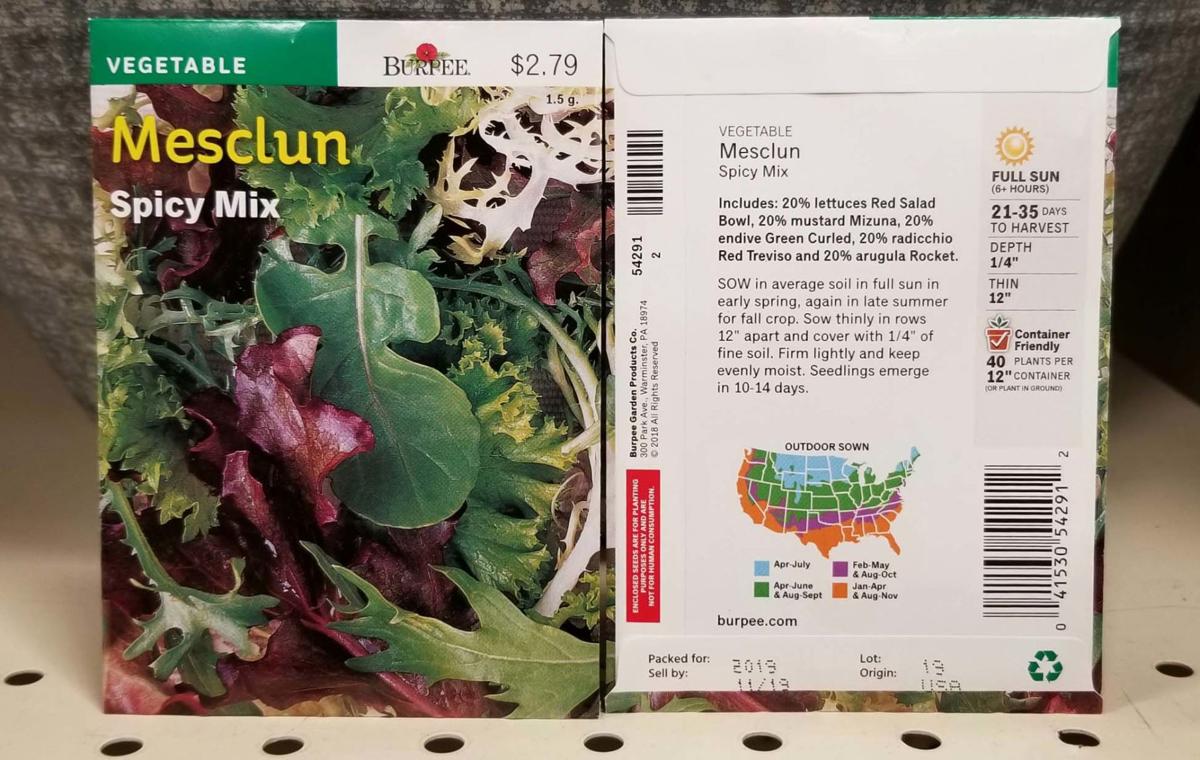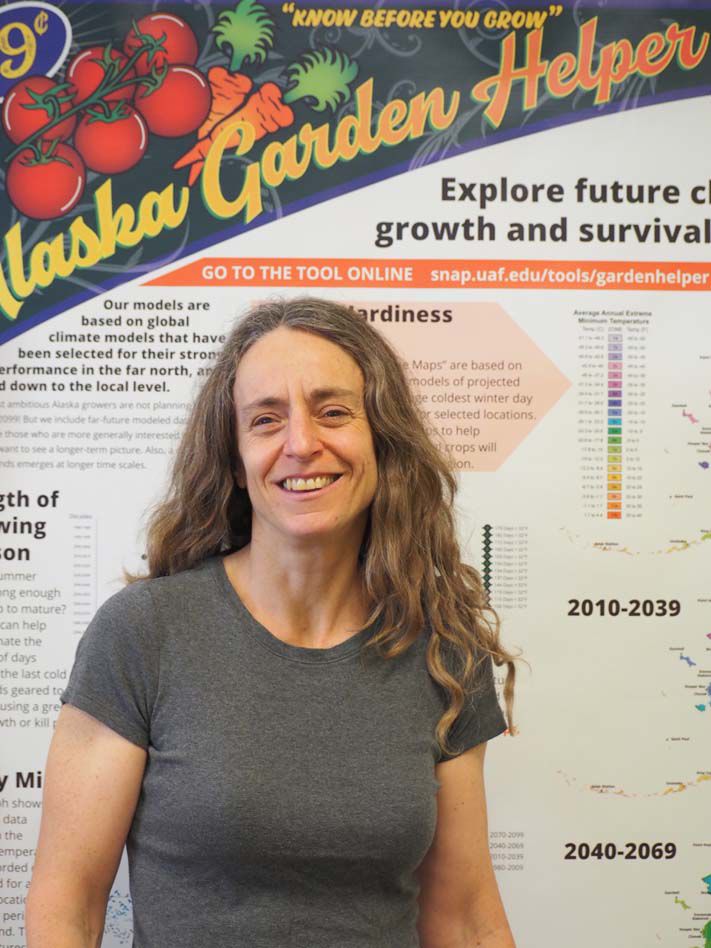
Gardeners and farmers curious about how the current warming trend might play out now have a customized set of computer tools at their disposal.
University of Alaska Fairbanks climate change researcher Nancy Fresco has designed a set of interactive tools packaged as Alaska Garden Helper to provide growers with information on season length, minimum temperatures, growing degree days and plant hardiness zones that spans the last four decades and projects far into the future.

Fresco is a research assistant professor with Scenarios Network for Alaska and Arctic Planning, known as SNAP, a climate change research group at the university’s International Arctic Research Center. Nancy first came up with the idea to develop a climate prediction tool for gardeners and farmers about three years ago. SNAP’s Alaska Garden Helper web pages went live in January, perfect timing for those of us stuck in the middle of winter.
I had great fun rooting round the Alaska Garden Helper web pages at www.snap.uaf.edu/tools. The tool gives two options for exploring future growing conditions. Select a model that projects greater changes or one that is more conservative. Alaska has warmed twice as fast as the rest of the United States so I opted to use the model that would predict greater changes.
Alaska Garden Helper’s four main tabs address parameters important to agriculture. Growing season length is one of many factors that determine what we can grow. Using the Growing Season tab, I discovered that the average length of the growing season in Fairbanks this past decade was 144 days. Ester’s growing season was a few days shorter. The beauty of Alaska Garden Helper is that it allows you to explore data for your own community.
Growing season is defined as the number of days between the last frost in spring and the first frost in fall. However, not all vegetables and flowers are killed when the temperature drops to 32 degrees. Cold-tolerant crops can handle lower temperatures. With Garden Helper you can select 28 degrees as the minimum temperature instead of 32 degrees. If you want vine-ripened tomatoes, plug in 50 degrees to see how many consecutive tomato-ripening days there might be at your location. No other growing season calculator I know of lets you choose temperature.
Growers often consider the number of days to harvest when contemplating what to plant but days to harvest depends on the weather and the accumulation of heat units called growing degree days (GDD). A GDD calculation is made by averaging the high and low temperatures for a day and then subtracting a selected threshold temperature. The threshold is the temperature below which significant growth is not expected to occur. GDD formulas for warm season crops use a threshold of 50 degrees and 40 or 32 degrees for cool season crops. The GDD value for each day is added to the value from previous days and is used to estimate when crops will be ready to harvest. For example, tomatoes require at least 1,700 GDD to reach maturity. Use Alaska Garden Helper to see if the number of growing degree days in your area will change.
Cold hardiness is a factor used when selecting which perennial trees and shrubs to plant. Even when dormant, plants have a minimum temperature threshold below which they will not survive. The Annual Minimums tab in Alaska Garden Helper focuses on our record-breaking coldest days.
Many perennials have zone designations that indicate their winter hardiness. Under the Hardiness Zones tab you’ll find that Fairbanks is considered to be in Zone 2b. Zone 2b locations have an average annual minimum temperature of between 40 and 45 below zero. What will the future bring? Predictions of a much warmer climate show Fairbanks as Zone 6a in 2070-2099. Imagine being able to grow magnolias.
Alaska Garden Helper was created with input from Spinach Creek Farm, Calypso Farm, UAF Georgeson Botanical Garden and others, including the Alaska Peony Growers Association. The U.S. Department of Agriculture provided funding via the Alaska Climate Adaptation Science Center. With additional funding, Nancy Fresco would like to continue her climate model research exploring how future changes will affect crop growth and survival in Alaska.
A flyer describing the Alaska Garden Helper online tool in more detail can be found at bit.ly/2IpOCKt. It proclaims, “Know before you grow.” The length of the growing season at Anaktuvuk Pass is predicted to become longer than 30 days.
Julie Riley is horticulture agent the Tanana District Office and can be reached at jariley@alaska.edu or 907-474-2426.